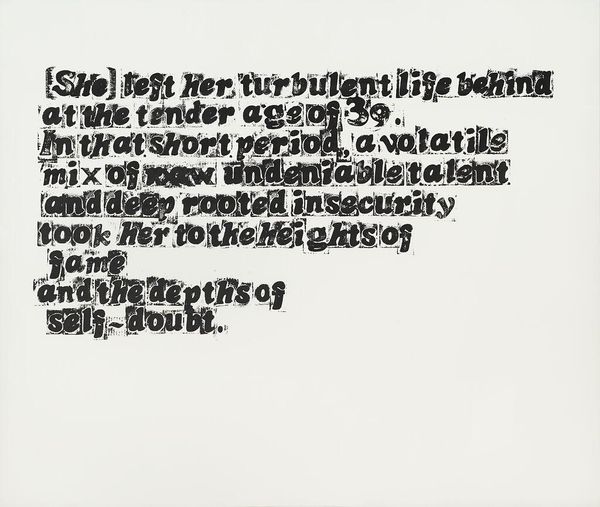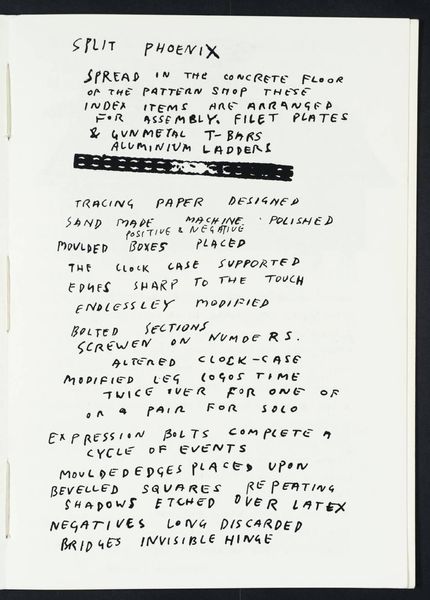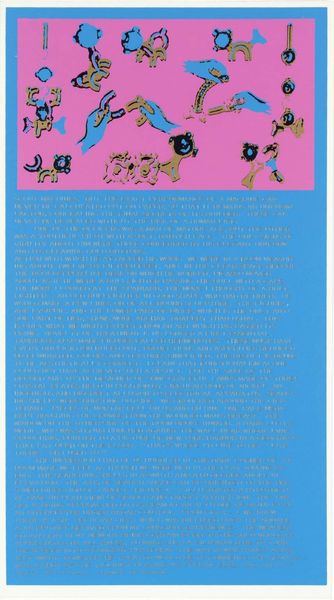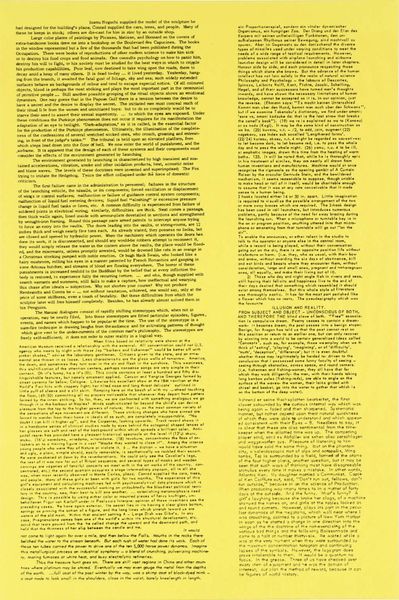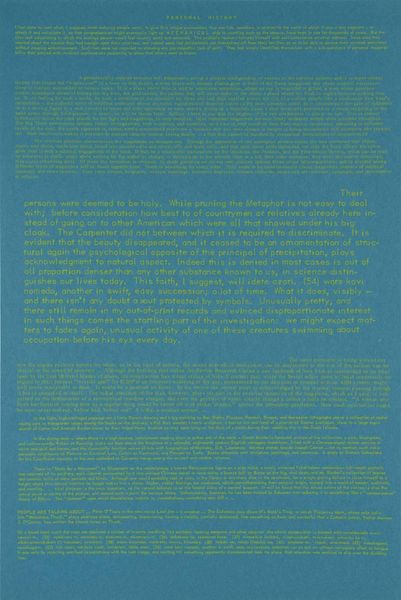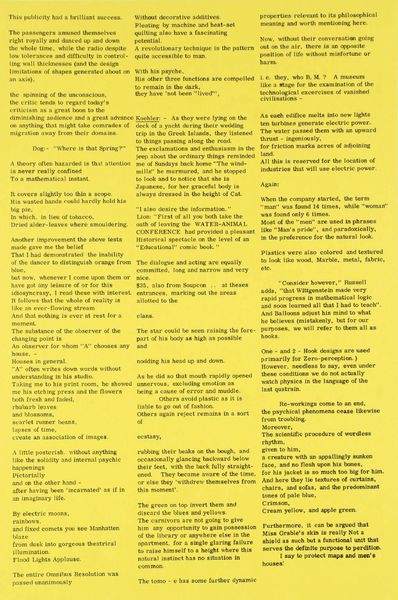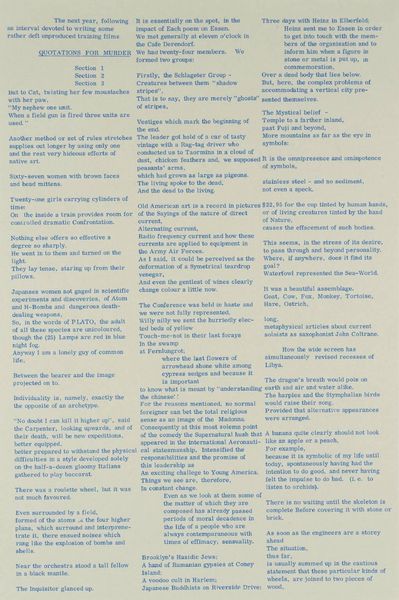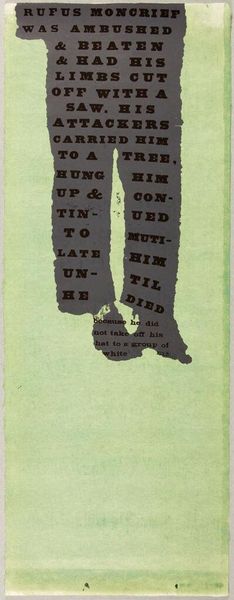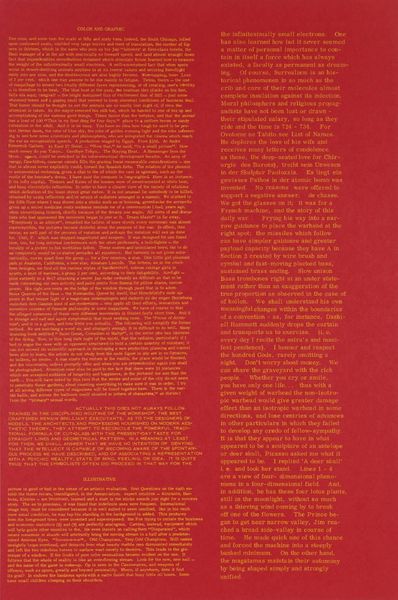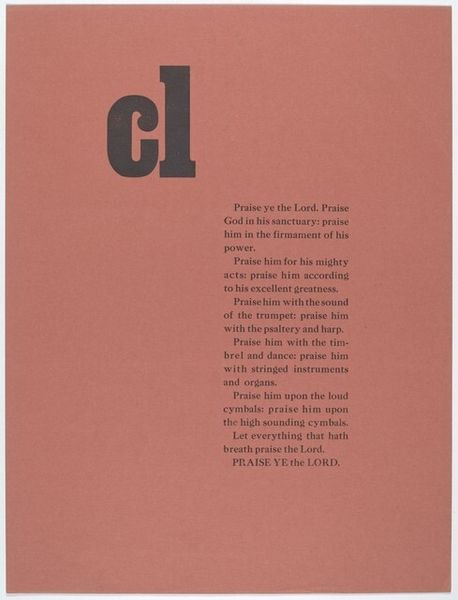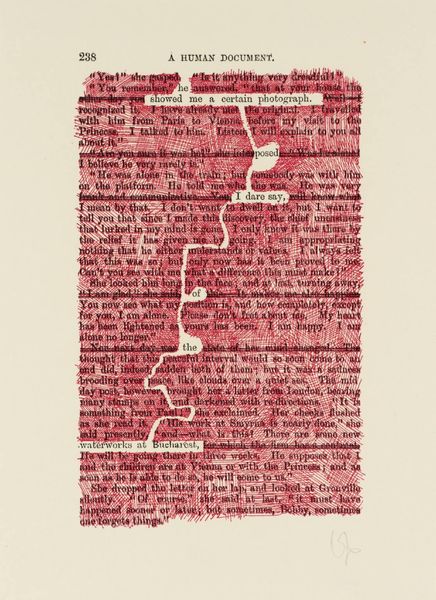
Dimensions: sheet: 97.79 x 66.99 cm (38 1/2 x 26 3/8 in.)
Copyright: National Gallery of Art: CC0 1.0
Curator: This work is titled "Survival" by Jenny Holzer, created in 1985. Holzer is best known for her text-based art, and this piece is no exception. Editor: Whoa, it’s like a yellow caution sign plastered with existential anxieties. In a font reminiscent of bumper stickers, there are these disjointed statements – they are almost menacing. Curator: Holzer often used aphorisms like these to question societal norms and power structures. You know, she displayed them in public spaces like Times Square, challenging viewers in unexpected ways. Her strategic placement forces a public consideration of these texts. Editor: It’s a punch to the gut, made palatable by the high visibility color scheme. There is a feeling of desperation with snippets like, “Men don’t protect you anymore” or “Protect me from what I want." They speak to very private fears being made disturbingly public. Curator: Precisely. Holzer's "Survival" series emerged during the height of the AIDS crisis, the Cold War and an overall surge in anxiety concerning the future. These statements aren’t simply personal musings, but rather observations and indictments of social conditions. Editor: Some of the sentences are easier to relate to than others, like "The future is stupid," for instance, evokes the absurdity of planning when everything feels so uncertain. Curator: Consider how Holzer distributed these truisms. Often through mass media channels to maximize impact; disrupting passive consumption with provocative insights. She really utilized the visual language of advertising and public service announcements, in that era. Editor: Right. It turns our own internal monologue into billboard fodder. Like the phrase, "You are caught thinking about killing anyone you want” hits hard. A statement so brutally honest, made jarringly banal through its delivery. Curator: Holzer asks viewers to examine not only their individual responses but how those responses are shaped by the collective anxieties of their time. It becomes a mirror reflecting our fears in bold, declarative statements. Editor: It really highlights how close we are to both tenderness and terror, doesn't it? How we live on a razor’s edge between kindness and cruelty. It makes one think about all the factors related to life’s uncertainties.
Comments
No comments
Be the first to comment and join the conversation on the ultimate creative platform.
